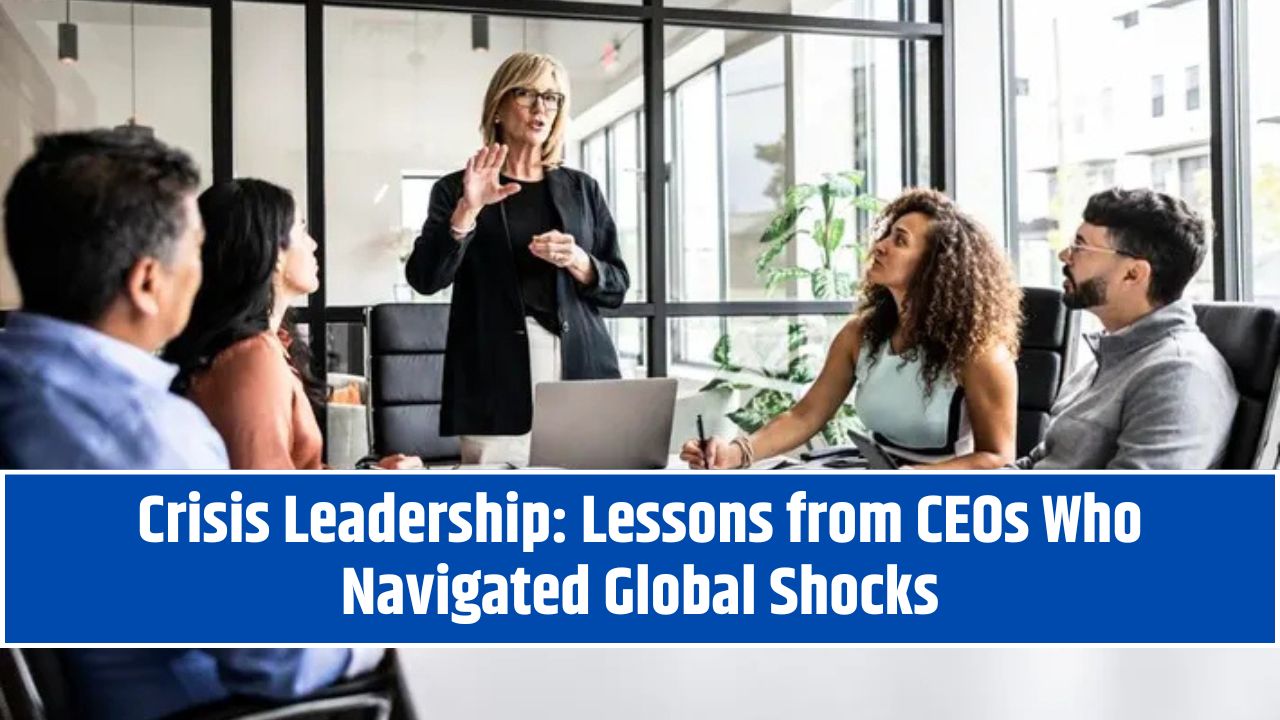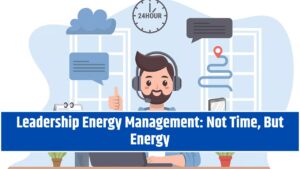Seriously. Leadership during good times? That’s easy. You smile in Zoom calls, approve a few budgets, maybe even throw in a motivational quote or two. But when the stock price tanks, the servers crash, or the world shuts down (hi, pandemic)—that’s when real leadership walks in, takes a deep breath, and gets sht done*.
So today, let’s talk about crisis leadership—but not the kind they teach in boring business school lectures. I’m talking real, raw, boots-on-the-ground lessons from CEOs who’ve stared global chaos in the face and didn’t flinch (okay maybe they flinched—but then they rallied).
You ready? Grab your mental notepad. Because this is about what actually works when everything’s on fire.
STORY TIME: THE PANIC THAT BECAME A PLAYBOOK
Remember March 2020? Of course, you do. The world hit pause. Businesses scrambled. And while some CEOs practically vanished into spreadsheets and damage control mode, others stepped up.
I had a client back then who ran a mid-sized logistics company. I watched him personally hop on 6 AM calls with drivers, reschedule warehouse routes himself, and hand-write thank-you cards to frontline staff.
He didn’t panic. He led.
Guess what? His company not only survived the storm—they expanded their fleet six months later.
That’s crisis leadership. It’s messy. It’s human. And it’s unforgettable.
LESSONS FROM CEOS WHO DIDN’T BREAK WHEN THE WORLD DID
1. SHOW UP. LOUDLY, VISIBLY, AND HUMANLY.
Let’s kick this off with Arne Sorenson, the late CEO of Marriott. In the middle of the pandemic, with travel basically evaporating overnight, he filmed a brutally honest video message to employees. No sugar-coating. No corporate fluff.
He admitted the pain. Shared real numbers. Cried on camera.
Why it mattered: People don’t want perfection during chaos. They want presence. They want to know the captain is still at the wheel, even if the waves are slapping hard.
Lesson: In crisis, silence is leadership suicide. Communicate early, often, and with real emotion.
2. DECIDE FAST. THEN ADAPT. THEN DECIDE AGAIN.
You know who got this right? Brian Chesky, CEO of Airbnb. When COVID decimated travel, Airbnb saw 80% of its business vanish overnight.
Brian made swift decisions:
- Cut 25% of the workforce (with extreme transparency + care)
- Refocused on long-term rentals and digital nomads
- Reinvented the brand narrative around “belonging anywhere”
Tough? Yup. But necessary. And he didn’t get stuck in analysis paralysis.
Lesson: Indecision during crisis is more dangerous than a wrong move. Take action, then iterate.
3. PUT PEOPLE OVER PROFITS—AND STILL WIN
Let’s talk about Dan Price, former CEO of Gravity Payments. He famously slashed his own salary to support employees during hard times. People called it reckless.
But what happened? Productivity soared. Retention skyrocketed. And the company? Still profitable.
Lesson: Treating humans like humans during hard times builds loyalty that money can’t buy.
Don’t just protect your brand. Protect your people. They are your brand.
4. TURN PAIN INTO INNOVATION
Remember Zoom’s Eric Yuan? The man basically became the face of remote life. But behind the scenes, he and his team were battling bugs, security threats, and server overloads—all at once.
Instead of hiding, they:
- Publicly owned their flaws
- Rolled out security patches like wildfire
- Made improvements based on user feedback
Zoom didn’t crumble under the pressure. It evolved.
Lesson: Use crisis as your crash course in what really matters to your customers. Then build like hell.
5. OWN THE NARRATIVE—BEFORE SOMEONE ELSE DOES
Howard Schultz of Starbucks gets this. During tough times (financial downturns, social criticism, unionization talks), he didn’t hide behind press releases.
He spoke. He blogged. He showed up on town halls.
And most importantly? He listened.
Lesson: If you don’t tell your story during crisis, someone else will. And you probably won’t like how they tell it.
6. PREPARE WHEN IT’S CALM—SO YOU’RE READY WHEN IT’S NOT
Every good crisis leader looks like a genius during disaster. But often, they just planned better.
Apple’s Tim Cook stockpiled critical components before COVID hit. Why? He was already paranoid about global supply chain risks from day one. That paranoia? It paid off big time.
Lesson: Crisis leadership starts before the crisis. Ask “what if?” way before things go sideways.
WHAT DOES THIS MEAN FOR YOU?
You may not be a Fortune 500 CEO (yet), but whether you’re leading a team of 2 or 2,000, these principles translate.
Let’s break them down into real-life tactics:
COMMUNICATE LIKE A REAL PERSON
Don’t hide behind fancy jargon or stiff emails. Be honest. Be present. Use video. Use voice notes. Use memes, if that’s your team’s vibe. Just don’t disappear.
“I don’t know the answer, but I’m working on it” is 100x better than silence.
CREATE YOUR CRISIS PLAYBOOK NOW
List the top 3 risks your business/team could face.
Outline a response for each.
Assign a “war room” team.
Review it quarterly.
That’s your insurance policy.
BE A SHOCK ABSORBER, NOT A VOLCANO
When everything’s stressful, your people are looking at you. Are you amplifying the chaos—or absorbing it with calm?
Sometimes being a good leader means holding space for panic without adding to it.
REMEMBER: CULTURE ISN’T WHAT YOU WRITE—IT’S WHAT YOU DO IN A CRISIS
Talk is cheap. Especially when the heat’s on.
Your actions in tough times define your leadership more than any values page ever will.
LISTEN TO THE FRONTLINES
The best insights during chaos often come from the bottom up. Not the boardroom.
That intern with the 3-slide workaround? That support agent who caught a recurring issue early? Listen to them.
CRISIS LEADERSHIP IN 2025: WHY IT STILL MATTERS
Global shocks aren’t slowing down. Climate. Geopolitics. AI disruption. Supply chains. Inflation. You name it.
If you’re leading anything in 2025—your family, your side hustle, your company, your team—being a calm, strategic, emotionally intelligent presence is your superpower.
Because people won’t remember if your projections were perfect.
They’ll remember if you made them feel safe.
Heard.
Seen.
And supported.
SO, WHO DO YOU WANT TO BE WHEN THE LIGHTS FLICKER?
You don’t have to have all the answers.
You just have to show up.
And lead.
Even if your voice shakes.
Even if your heart’s pounding.
Even if the path’s unclear.
That’s where real leaders are born.




